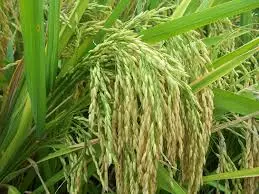AA Edit | Early Rain: Some Pain, Many Gains
Though traditionally the southwest monsoon makes landfall by June 1 in Kerala, the rain touched parts of Kerala and the northeastern states by late May because of the multiple climatic factors as well as a low-pressure area that developed in the Arabian Sea

The early onset of the monsoon this year has brought relief to farmers, as well as to the people from the summer. The southwest monsoon currents are the mainstay of agriculture in most parts of the country, barring Tamil Nadu and parts of coastal Andhra Pradesh which are fed by the northeast monsoon. Though traditionally the southwest monsoon makes landfall by June 1 in Kerala, the rain touched parts of Kerala and the northeastern states by late May because of the multiple climatic factors as well as a low-pressure area that developed in the Arabian Sea.
The early rains will be beneficial for farmers, especially in drought-prone regions such as Maharashtra, as they will allow quicker sowing of kharif crops such as paddy, maize, and pulses. An early monsoon reduces dependence on irrigation, and replenishes groundwater tables. If the farmers have prepared for sowing, the early monsoon could lead to a longer growing season and potentially better yields.
The early monsoon could work against farmers, if they are not yet prepared for sowing. Untimely sowing and lack of protection against waterlogging could affect small farmers and could offset most benefits of the early sowing.
Conversely, an early monsoon poses a problem for farmers with crops of the previous season that is ready for harvest in the fields, or has reached the market yards. With inadequate protection, this produce tends to get soaked and adversely affects the income of farmers. The early rain has also caught civic bodies unawares, leaving them no time to attempt quick fixes on failing urban infrastructure.
In the larger scheme of things, the early monsoon could be a disturbing trend linked to climate change. Experts have been warning that rising ocean temperatures, especially in the Indian Ocean and the Bay of Bengal, are altering the monsoon's timing, intensity, and spatial distribution.
Extreme rainfall events are getting more common, increasing the risk of crop damage and soil erosion. These changes affect not only farmers but also the broader rural economy.
While no single country can avert climate change, India should tailor projects which compliment nature and not against it. When advanced econo-mies are hesitant to make compromises to protect the Earth, India could emerge as the leader of those countries which are at the risk of extinction.
